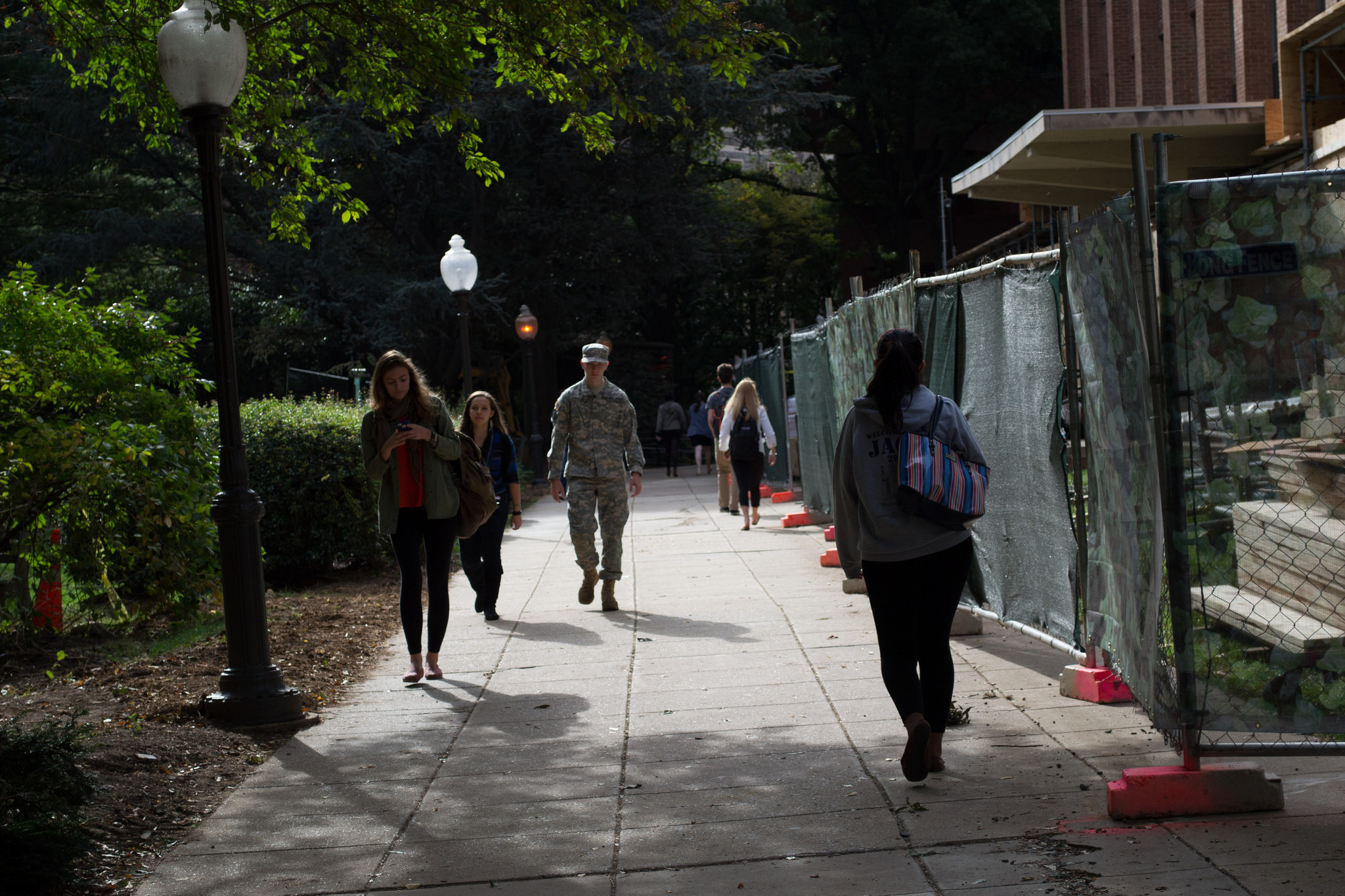The University started decommissioning and demolishing labs on the third floor of the Reiss Science Building on Aug. 1. As part of the demolitions, an asbestos removal project started on Sept. 26. The entire demolition process is slated to end on Sept. 30.
According to a memorandum dated Aug. 16 from Jim Duffy, a project manager in the facilities department, addressed to “Reiss Science Occupants” Irreno Contractors is set to decommission and demolish several labs on the third floor and oversee safety procedures. The memorandum was posted on several doors in Reiss.
“Areas immediately adjacent to the project area will be monitored for dust, noise, or any other health hazard to ensure the safety of the building occupants and complete conformance to all requirements,” the memorandum read.
The memorandum also stated that along with the general lab demolitions, the project would also consists of work to remove asbestos. “Subsequent or concurrent with the labs decommissioning, there will be asbestos abatement work to remove the Transite wall panels,” it said.
A second notification posted on Sept. 21 elaborated on the asbestos abatement project. According to the Sept. 21 notice, Selective Wrecking & Abatement is set to remove asbestos from the building from Sept. 26 through Sept. 30. According to the notice, D.C. law requires a three-day notice for all asbestos removal projects exceeding 260 feet or 160 square feet.
The demolition will impact few people. According to YuYe Tong, chair of the department of chemistry, many floors on Reiss are vacant after their occupants moved into the newly-constructed Regents in 2012. The third floor was shared between the Bloomer Science Library and the Departments of Biology and Chemistry; however, the floor is now mostly empty.
The Reiss Science Building was built in 1962, and according to Tong, the building contains asbestos like many other building in its time period because it was a common fire-retardant. Any renovation of an old building must start with asbestos removal.
The University declined to comment about why the renovations are taking place, but according to Tong, there is speculation circulating about what the University plans to do with this space. “Reiss was the science building, the major hub for Georgetown sciences, so the initial idea was, once all of the science faculty members, research labs, are moved out, or were moved out to Regents and there would be the renovation of the Reiss science building turned into a modern laboratory and for the expansion of science educations and scientific research,” Tong said.
In the meantime, Tong said the University could use the renovated floor as office space. “They don’t know when they will have money to rebuild this building so, in the interim, they wanted to reuse this space.”
This article has been edited for phrasing.





